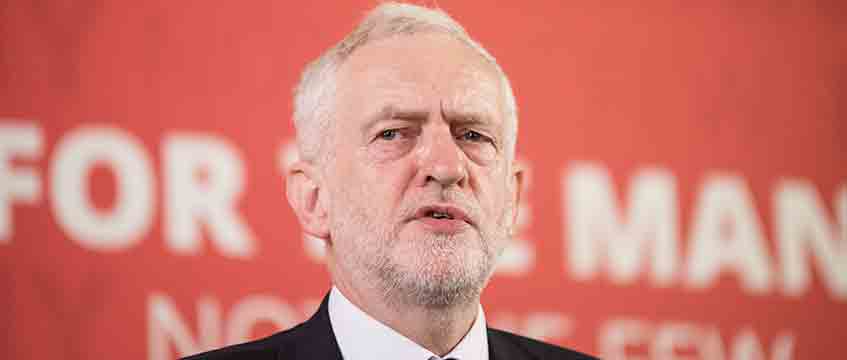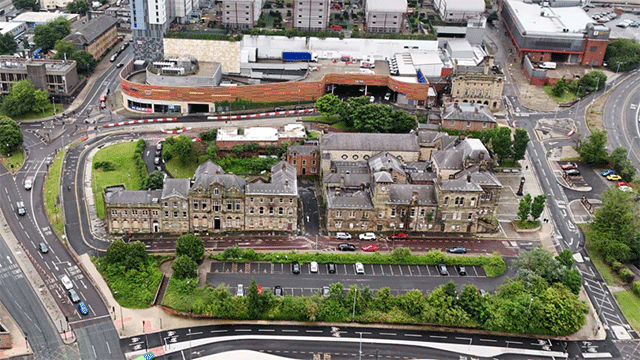Jeremy Corbyn has big plans for big business – from higher corporation tax to renationalising the railways. As the polls show the gap between Labour and the Conservatives narrowing in the General Election race, experts consider what a Corbyn government might mean for the property sector.
Stagflation
 Toscafund chief economist Savvas Savouri says: “In all my years of economics, I have seldom come across policies, as well-meaning as they are, more certain to result in stagflation than those currently being presented by the Labour Party.
Toscafund chief economist Savvas Savouri says: “In all my years of economics, I have seldom come across policies, as well-meaning as they are, more certain to result in stagflation than those currently being presented by the Labour Party.
“A Corbyn premiership would trigger considerable capital flight – human and financial capital – and sharp sterling weakness.
“For all the promises to raise public sector investment, it is inconceivable that sharply higher Gilt yields and increased corporation tax rates would not see a sharp fall in private sector investment, employment and property demand. Private consumption would itself be badly hit by falling asset prices (property and equity prices falling as consumer price inflation accelerated). Sure, a weaker pound should lift exports – but in reality the currency benefit would lift prices rather than export volumes.”
Collaboration
A Labour majority would mean the industry would have to start again with a new housing minister to replace Gavin Barwell. The shadow housing minister is currently John Healey, who described the housing white paper as “feeble beyond belief”.
However, Ian Fletcher, director of policy at the British Property Federation, says the industry wouldn’t be “starting from scratch” with a Labour government.
“For any organisation that works with government, you work with whatever party is in power,” Fletcher says.
Key Labour property policies:
- Fund £1.6bn of its election promises with a 15% additional tax on residential property bought through offshore entities.
- Deliver 100,000 council and housing association homes a year by the end of the next parliament.
- Set up a new Department for Housing to focus on tackling the housing crisis and to ensure housing is “about homes for the many, not investment opportunities for the few”.
- Examine proposals for a Land Value Tax as a possible replacement for council tax and business rates.
- Create a National Infrastructure Fund, taking advantage of “near-record low interest rates” to invest £250bn over 10 years in infrastructure – defined as transport, energy systems, communications, scientific research and housing.
- Create a “joined-up industrial and skills strategy” to support a “vibrant construction sector” with a skilled workforce and rights at work.
- Overhaul the Homes and Communities Agency as a housing delivery body, and give councils new powers to build the homes local communities need.
- Guarantee funding for Help to Buy until 2027. (Labour would also give local people buying their first home “first dibs” on new homes built in their area.)
- Raise standards and encourage more secure tenancies in the private rented sector. The party would give leaseholders “security from rip-off ground rents” and end the “routine use of leasehold houses in new developments”.
“We have worked with some of the shadow team over many years, such as [shadow housing minister] John Healey, on housing and property investment policy,” says Fletcher.
He cites the Lyons Housing Review from 2014 as an example of collaboration between the sector and the Labour Party.
He adds: “Labour MPs often represent the big urban centres, and therefore see at first hand the regenerative impact our industry has on their cities and communities.
“Consequently, many of our members also have a very constructive relationship at a local level.”
However, he says the industry needs a government that is “100% focused on our business competitiveness” and the economy as we enter Brexit negotiations. “Whoever wins on Thursday must have that at the forefront of their policies.”
How likely is a Labour majority?
At the start of the election campaign in April, a Conservative majority appeared to be a dead cert. Now, civil servants have been told to prepare for a hung parliament or coalition, after the Conservative Party’s manifesto flopped.
Last weekend’s polls all had the Conservatives in the lead, but by varying degrees. The gap between Labour and the Conservatives ranged from just one point in Survation’s poll to 12 points in the ComRes poll.
There are a lot of unknowns, including how many young people will turn out on the night. The young are twice as likely to vote Labour as the old, and the old twice as likely to vote Conservative, says Ipsos MORI chief executive Ben Page, writing in The Times. As recent votes have shown, it is better to be prepared for an unexpected outcome.
Main image: Vianney Le Caer/Rex/Shutterstock
To send feedback, e-mail Louisa.Clarence-Smith@egi.co.uk or tweet @LouisaClarence or @estatesgazette











